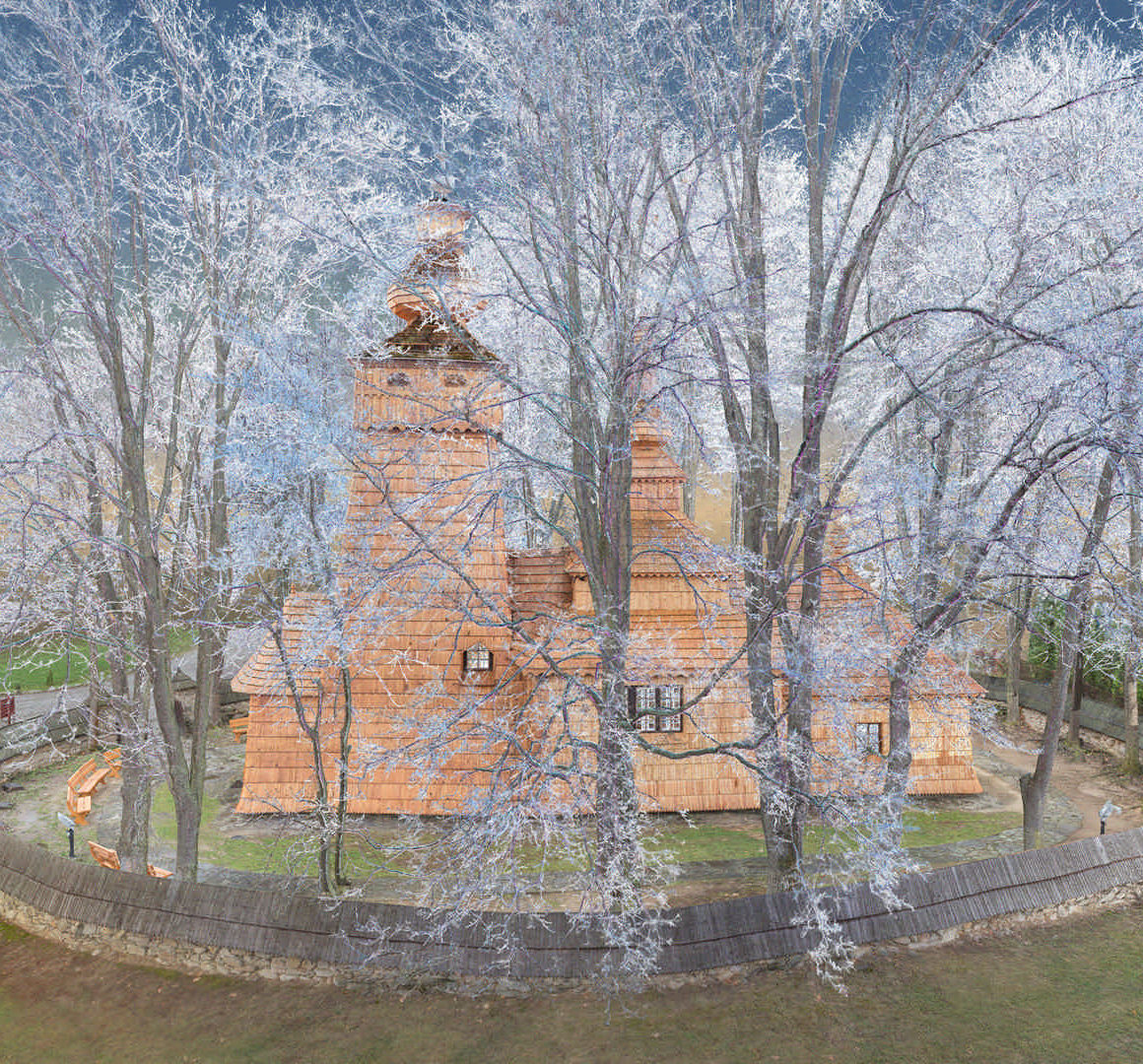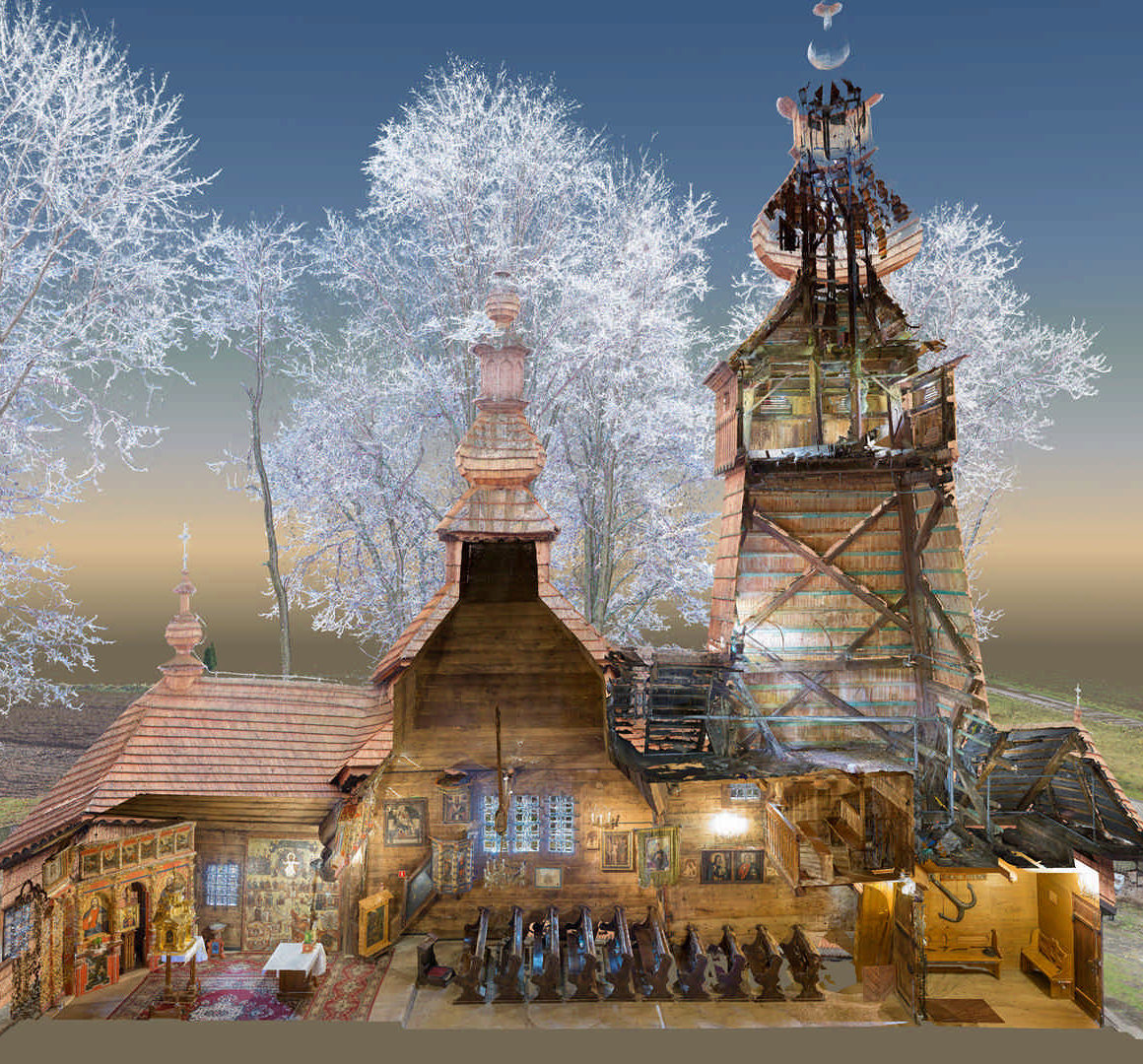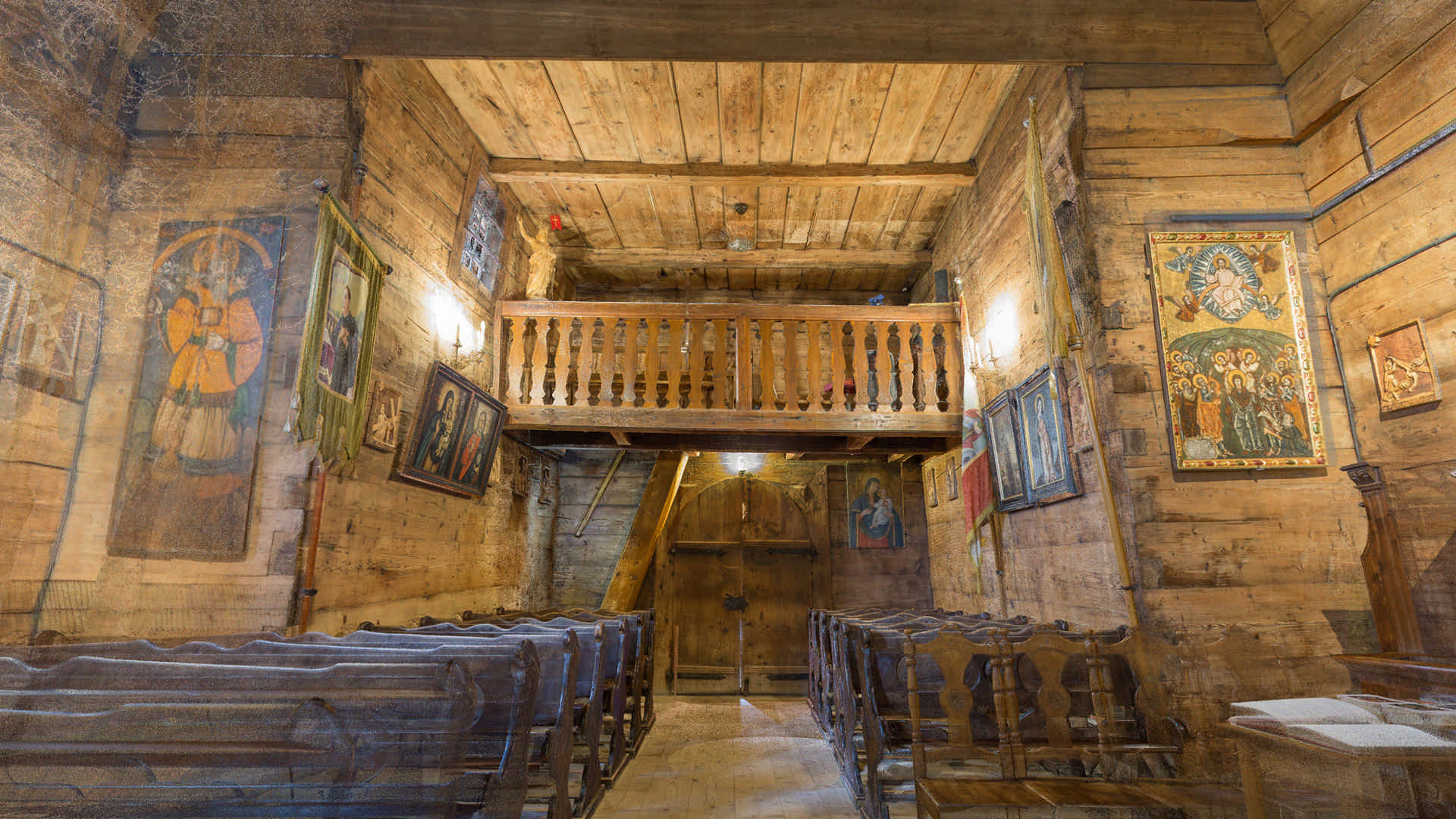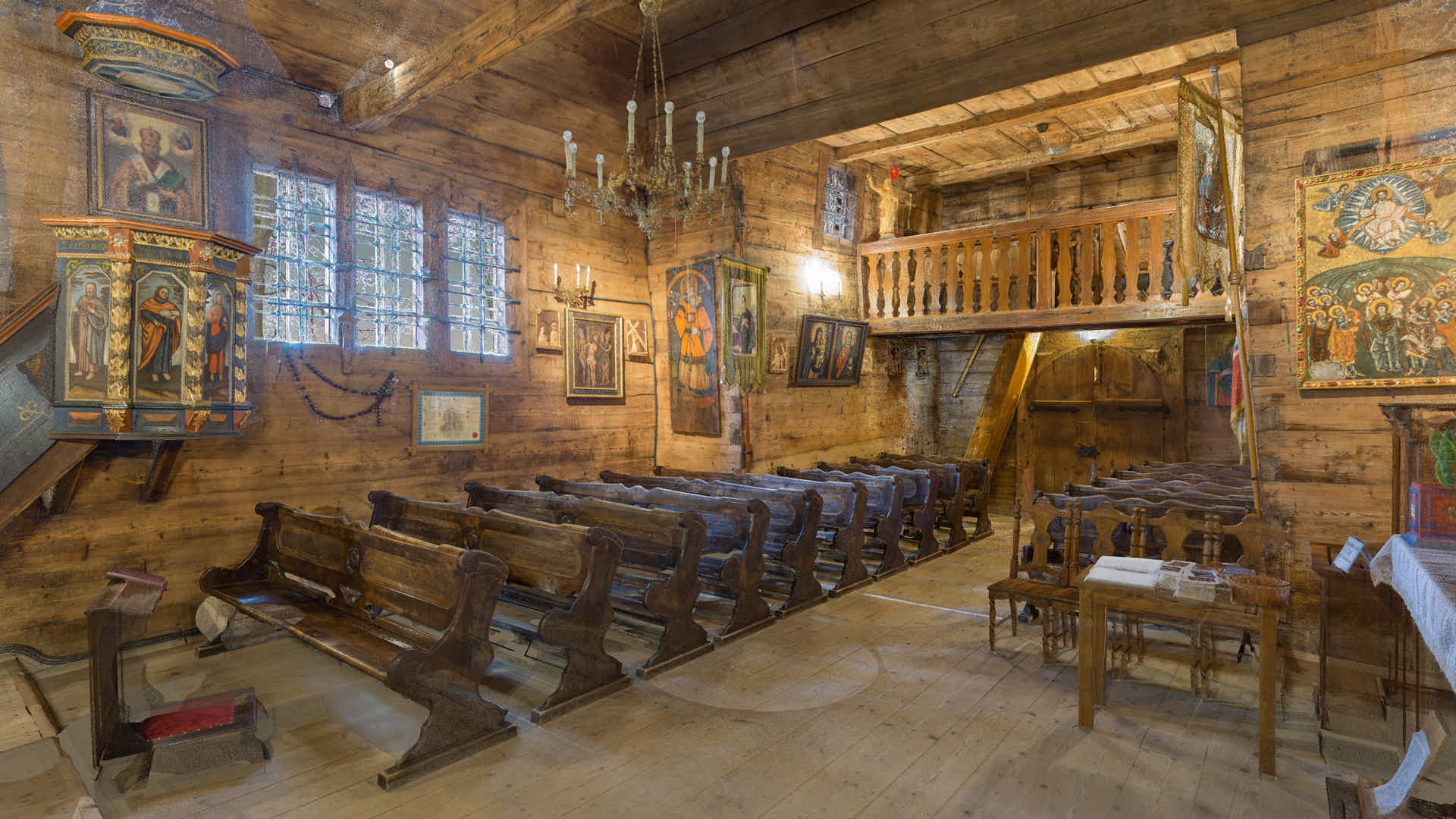Powroźnik – Orthodox Church of St. James the Apostle
The modern shape of the church is a result of the 1813 reconstruction. However, its oldest part (currently the sacristy) dates from 1600. The temple represents the West-Lemko style. The walls, roofs, and domes of the towers are covered with shingles. The crosses crowning them are the only elements forged from metal.
The tower above the matroneum gained a small vestibule, or porch. It is covered by a separate small roof. The roof over the nave is two-tiered. The roof over the sanctuary has three straight slopes – on the northern, eastern, and southern sides.
From the north, the building has only one small window in the sacristy. One window is located in the wall of the sacristy and the sanctuary on the eastern side. On the southern side, there is a large triple window. They are all rectangular.
The sacristy adjoins the northern wall of the sanctuary. It is outlined by five walls: one perpendicular to the wall of the presbytery, oblique, parallel, oblique, and another perpendicular. This room has only 13 square meters.
In the original temple, this small space served as the sanctuary.
During Operation Vistula and the forced resettlement, the church in Powroźnik shared the dreadful fate of many other temples. The Greek Catholic parish ceased to exist at that time. The building was taken over by the Roman Catholic church. The new hosts introduced significant changes to the interior design.
The church is surrounded by a stone wall covered with a shingle roof and slender lindens and larches growing along it.
The length of the entire building: 21 m
The width of the matroneum: 4 m
The width of the nave: 7 m
The width of the sanctuary: 5 m
The height of the tower above the matroneum: 21 m
The height of the tower above the nave: 16 m
The height of the tower above the sanctuary: 9.5 m
It is part of a group of wall paintings made in 1607 on the order of Father Michał Miejski. They cover the entire surface of the wooden walls and vaults of the former church sanctuary. Currently, this part of the temple serves as a sacristy. The painting composition entitled “The Entry into Jerusalem” is to the left of the entrance. It is almost two meters high and about two and a half meters wide. Over the centuries, the colors have lost their vividness. The painting is dominated by the dim blue background, gray donkey, and fiery red of some of the robes. The painting method has the charm of archaic simplification. It introduces an aura of spirituality.
Christ sitting on a donkey is the central character in the painting. He is the largest figure of the composition. To his left, there is a group of apostles. To the right, we can see a cheering crowd of residents of the capital of Israel. In the distance, there are the soaring walls and buildings of Jerusalem.
Jesus and the donkey are shown from the right profile. Christ is looking at us. His head is surrounded by a red circle – the so-called nimbus. Next to him, there is a white inscription in Cyrillic (in Church Slavonic language). It reads: “The Entry into Jerusalem of Our Lord Jesus Christ.” Jesus’ long dark hair cascades in gentle waves onto his shoulders, tucked behind his ear. His eyes are looking into the distance from under the thin lines of black eyebrows. Jesus has a straight nose. Above his slightly outlined lips, we can see a thin mustache. His chin is covered in short dark stubble.
The right hand is raised, with two fingers extended in a gesture of blessing. The left one is holding the donkey’s harness. Jesus is wearing a white tunic and a red coat falling down in multiple folds. We can see a bare right foot sliding out from under the coat. The donkey is light gray, covered with an orange blanket. Its long ears are sticking up briskly and its big dark eyes are peeking at us gently.
On the left, the apostles are forming a tight group. Their heads are surrounded by halos. They are turning their bearded faces towards Christ, walking and staring at him. They are dressed in long blue tunics and red coats. To the right of the group, there is a tree growing in the background. Two men are climbing the trunk.
To the right of Christ, we can see a crowd of Jerusalem’s residents. They have come outside the city walls to greet Jesus. The perspective is presented in a simplified way. One group of blurred figures is much smaller, which gives the impression that it is further away. The other group consists of much larger figures. The bearded men are staring at Christ. One of them, standing at the front, is waiting with his arms open.
In the upper right corner of the composition, there are some high-rise buildings of Jerusalem. The tower and the white-walled building are crowned with red domed roofs.
Video:








